Woof, woof…is not what we mean
The bark of a seedling is little more than a crêpe paper thin covering. The bark of a Cork Oak can be 8 inches thick and Redwoods can have 1 foot thick bark. The thickest bark is on ancient, giant Sequoia trees and is around 3 feet thick. Bark not only protects the delicate inner tissues of a tree, but is a water proof, insect resistant, thermal coat of armor. For a lesson on how trees grow try this site. https://texastreeid.tamu.edu/content/howTreesGrow/
Throughout the year, we get questions about tree bark. We hear “It’s splitting”, “It’s peeling.”, “It’s falling off.” and”It has holes in it.” Thankfully, some of these “problems” are normal. As trees grow, their bark changes. Tree seedlings have a very thin coat that is easily damaged or quickly eaten by animals such as deer and rabbits. Depending on the species, by the time a tree is a few years old, the bark begins to change. Some trees, like pines, begin to have mature looking bark at an early age. Other species may take a decade or more to start showing mature bark. The picture below, on the left, is of a 15 gallon Live Oak. The bark is relatively smooth. The picture on the right is a 45 gallon Live Oak. There is about a 3 year difference between the 2 sizes. The 45 gallon has begun to show typical cracking, the first stage of mature bark growth. As long as the cracking is not accompanied by any oozing or bugs, it’s perfectly normal.
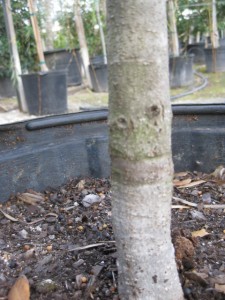
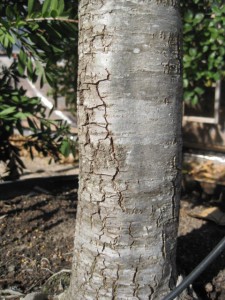
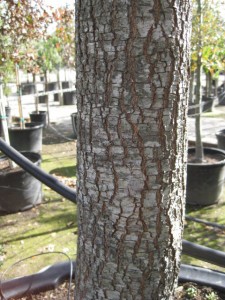
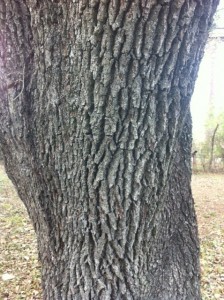
The 200 gallon Live Oak on the left, shows the steady progression of maturing bark. The entire lower part of the tree will have a similar texture and bark thickness. The picture of the 30-year-old Live Oak (on the right) has an entirely different look with deep fissures and corky ridges. The upper branches of the tree (the youngest parts) will have a less mature appearance. The newest growth will have the thin crêpe paper like bark of seedlings.
Another “Not a problem”…most of the time.
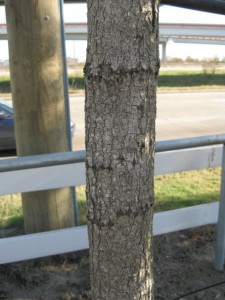
Small holes drilled in horizontal lines, around the tree trunk are from Yellow Bellied Sapsuckers. https://www.houstonaudubon.org/default.aspx?act=newsletter.aspx&newsletterid=853&category=Bird%20Gallery&MenuGroup=Profiles&&AspxAutoDetectCookieSupport=1 They are a migratory species of woodpecker, we typically see in the fall and through the winter. They are after 2 things, sweet sap and the bugs that get caught in the sap. They prefer some specific trees over others, even if the trees are the same species. The damage they do is usually minimal, but one over zealous bird, on a particularly sweet tree, can cause serious damage. It you notice severe Sapsucker damage, wrap the area of the trunk where the damage is being done. Use chicken wire https://en.wikipedia.org/wiki/Chicken_wire to prevent the birds from accessing the area. Wrap it loosely, so there is a gap between the wire and the trunk. If it is too tight, the birds will still be able to get to the tree. Remove the wire in the spring, since the Sapsuckers will be headed north to their breeding grounds near the Great Lakes.
Don’t Panic!
When in doubt call us or email a picture to mary@rcwnurseries.com or rcwanswers@gmail.com . We will get back with you as quickly as possible and let you know if you need to relax or call in a professional.
